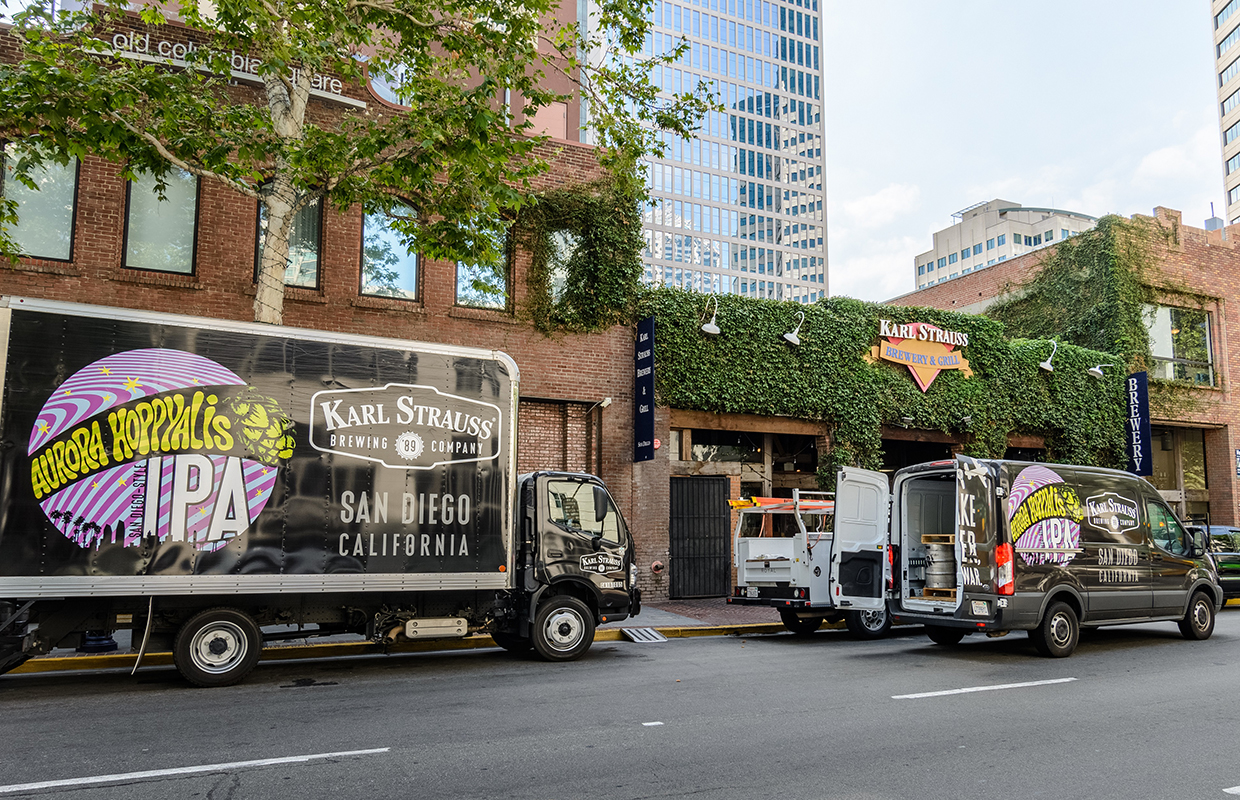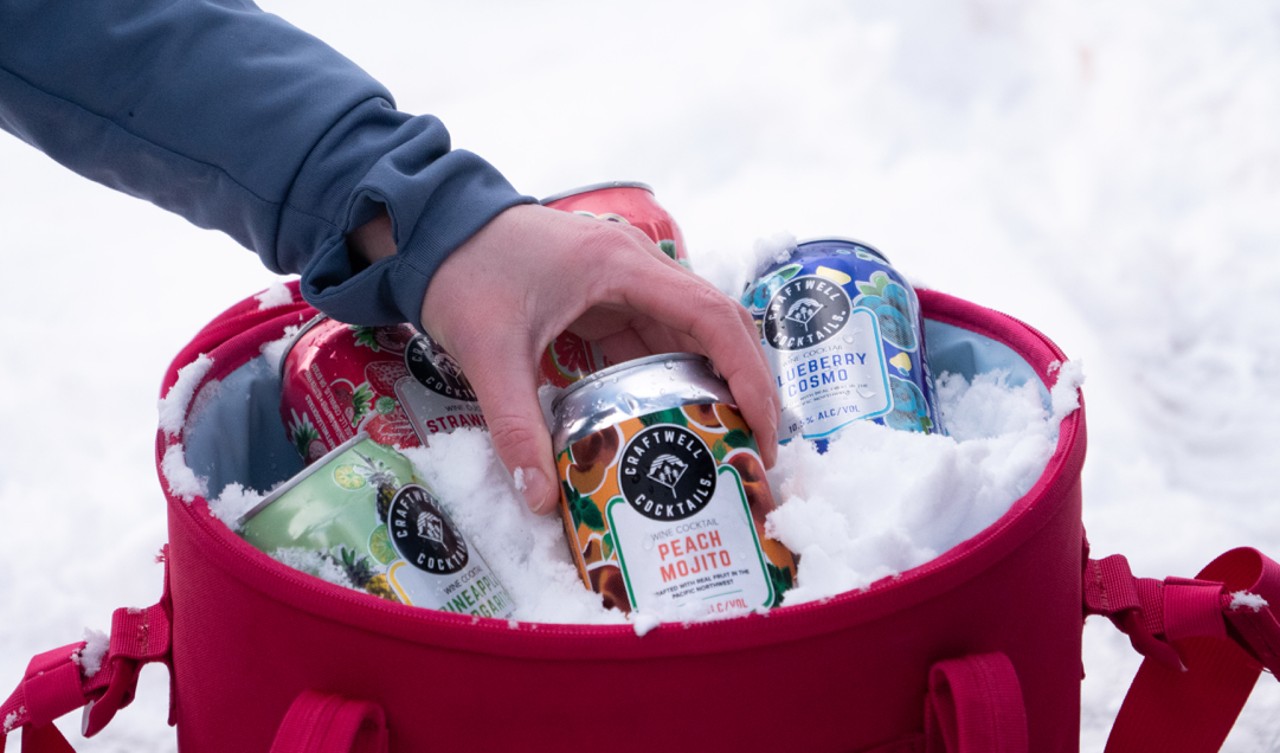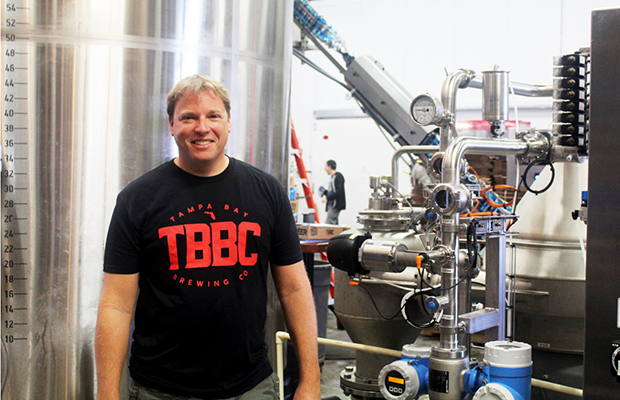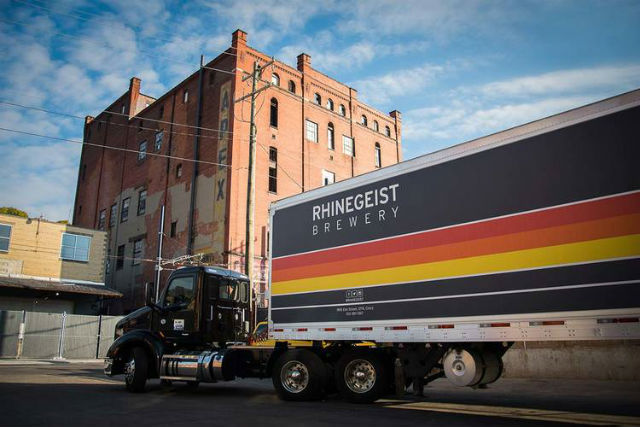
The world of craft beer has changed immensely since Karl Strauss opened its doors in 1989, but the aspects that have made the San Diego institution grow early on are still the same aspects the brewery is using today.
“The craft brewing industry has run full circle,” explained Chief Experience Officer, Jen Briggs, who joined on with the veteran company in late 2021. Briggs pointed out that in the late 80s and early 90s, Karl Strauss — founded by Chris Cramer and Matt Rattner — took a lot of work to get distribution and compete with bigger breweries.
“It was a feet-on-the-street daily challenge,” Briggs said.
Eventually, she added, consumers embraced the idea of “craft brewing.”
“Early entrants, like Karl Strauss, were present and resonant for the early craft consumer, and Karl Strauss played an important role in craft beer quality mastery and the community at large,” she said. “Then came the small craft brewery competition, where there were many options.
“In certain ways, we are back in the early years, fighting for market share from the bigger breweries and mass-produced products. We are meeting the consumers again and learning what they like. Tastes have changed.”
Those aspects that made Karl Strauss strong in the early years also make it strong today, Briggs counters, saying the brewery has always relied on its perseverance, connectedness, and adaptability.
READ MORE: Brewer Magazine Q&A: Matt Rattner, Karl Strauss Brewing
“Many craft brewers are small to medium-sized businesses, and the complexity of the market and the sophistication of consumers require depth of leadership,” Briggs said, adding that means pivoting.
“We are specifically leaning into our business’s Karl Strauss Distribution arm, balancing on- and off-premise sales and how we use our portfolio between more mainstream styles and creative small batches,” she said. “There are no easy revenue streams, and profitability is challenging.”
That means embracing the complexity of the markets and the challenges of leadership while Briggs said they are working to try to balance investments between capital expenditures, sales and marketing, and people and thinking with a long-term profit-centered mindset.
“A key is to be smart and not chase growth for growth’s sake,” she said.
More recently, the brewery has looked to get back to its roots and shed the notion that it’s a bigger brewery than some outside consumers might think. Being around for as long as Karl Strauss has it sometimes falls into the trap of many thinking it’s a national brand versus being a San Diego-based staple. The Outpost, an 85,000-square-foot beer garden concept opened this fall and marked the brewery’s fifth San Diego County location and the ninth overall in Southern California. The brewery also completed the acquisition of its original brewery/brewpub location on October 1.
“We know that for on-premise dining and drinking, people like to be connected to the brand,” Briggs said. “Karl Strauss may have looked bigger than it was at times, and there may have been a perception that Karl Strauss pubs are a larger chain. This inadvertently disconnected consumers from the unique and distinct character of an independent, local company.
“Now we aspire to amplify our pride in how each pub connects to its local neighborhood. We want to show that we serve the grocery shoppers and the local communities at the same time.”
Brewmaster Paul Segura told Brewer recently they are always looking at new trends, raw materials, and technologies in the industry.
A switch over to a new five-vessel brewhouse with a whole new tank system along with a new rotary canning line are just some innovations that excite him.
“Big changes are a brewin’ for us, and we’re looking forward to 2024,” he said.
Branching outside of the state has also become an aspect as the brewery recently added distribution into Nevada after spending a few years serving Arizona.
So as the craft beer market continues to evolve from beer to a broader range of beverages, Briggs said they want to serve that market.
“We see that in our consumers,” she said. “We know people love a quality West Coast IPA like Tower X, and we also know people love a quality Lager.
“They also love the mixology aspects of creativity. We are creating pathways to multiple consumer segments, and that is an exciting element of the creativity that is needed and that we can provide.”






Be the first to comment